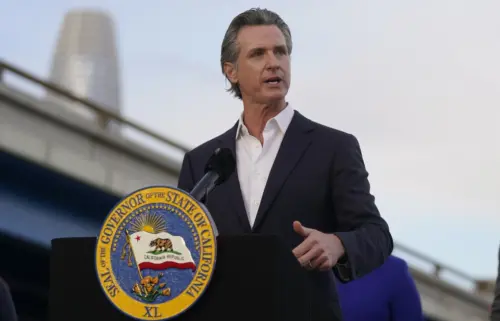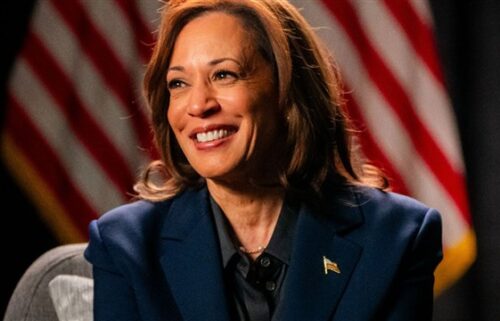Biden directs states to open vaccinations to all adults by May 1

Addressing a pandemic-worn nation a year after coronavirus brought life to a halt, President Joe Biden on Thursday offered a plan to lift the country from crisis using a pair of upcoming dates: May 1, by which he will order states to allow all adults to receive vaccines; and July 4, when he said Americans can again celebrate Independence Day in person.
The deadlines offered distinct time frames for frazzled citizens looking for a sign that the worst year in recent memory is receding; they also carry inherent risk if they are not met. In a speech — his first in prime time — that actively sought to rebut the denials and divisions cultivated by his predecessor, Biden said the efforts he’s undertaken after 50 days in office could allow for a semblance of normality within months.
“After this long hard year, that will make this Independence Day something truly special, where we not only mark our independence as a nation but begin to mark our independence from this virus,” he said.
He cast the effort to beat back the virus as a collective and patriotic initiative, even as he lamented the untold losses suffered by Americans over the past year.
“Finding light in the darkness is a very American thing to do. In fact, it may be the most American thing we do,” he said.
For Biden, it was a moment to summon a deep well of empathy as he spoke to a nation ready to move beyond its collective grief and exhaustion. His words were similar to the ones he had delivered for much of the last year as a candidate, but the message carried a far heavier weight as he addressed Americans from the Cross Hall of the White House.
He did not mention his predecessor by name — the burden, by this early stage of his presidency, is his and his alone — but he made clear he was turning a page from the Donald Trump era.
“We know what we need to do to beat this virus,” Biden said. “Tell the truth.”
Biden spoke out forcefully against a recent rise in hate crimes targeted at Asian Americans, a sharp break from former President Donald Trump who as recently as Wednesday referred to the “China virus” when taking credit for vaccine development.
“At this very moment, so many of our fellow Americans are on the front lines of this pandemic, trying to save lives. And still — still — they are forced to live in fear for their lives, just walking down streets in America. It’s wrong. It’s un-American. And it must stop,” he said.
The President delivered a careful balance of optimism along with a strong dose of reality, as he told Americans: “This fight is far from over.” He also issued a clarion call for “national unity,” imploring Americans to set aside the partisan fights over masks and restrictions.
“I will not relent until I meet this virus, but the American people: I need you,” Biden said. “I need every American to do their part.”
President in full
It was, perhaps, the first time the nation has seen Biden as a president in full, with the flags of the American states and territories behind him and the iconic red carpet of the White House state floor stretching over his shoulders.
He didn’t mention Democrats or Republicans, vote counts or legislative language, but rather focused on “a shared experience that binds us together.”
For Biden, the speech was also something of an audacious gamble — effectively circling dates on the calendar when normalcy may return to the United States. It was an olive branch of optimism — for those who supported him and those who did not.
The announcements in Biden’s speech amount to the most aggressive timeline toward reopening yet, one that comes as Covid-19 cases drop but as thousands of Americans continue to die from the virus each week.
Yet they also fall well within reasonable expectations given the current trajectory of vaccination efforts, some of which began before he entered office.
Biden announced Thursday that his onetime goal of vaccinating 100 million Americans within his first 100 days in office would now be met on day 60. He entered office when vaccinations were nearing 1 million per day. And most states are already speeding along to wider eligibility for vaccines, and one — Alaska — has already opened vaccinations to every person over 16.
Still, 50 days into his term and at what officials describe as a critical juncture in the trajectory of the crisis, Biden offered the most forward-looking remarks to date toward reopening the country, even as more than 1,000 people die per day.
He occupied the same television space his predecessor used one year ago to tell Americans the risk of the virus was “very, very low,” offering a vastly different message following nearly 530,000 US deaths, an economic meltdown and a dramatic altering of everyday life.
He laid out new steps the administration believes makes the May 1 timeline realistic, including expanding the types of professionals who are able to administer vaccine shots. Dentists, veterinarians and paramedics will all be included in the new approved list.
The White House also said a national website launching at the start of May would provide information about locating a vaccine. And officials unveiled a doubling of the number of federal mass vaccination centers and announced an additional 4,000 active duty troops will participate in the vaccination effort.
The target by which enough vaccine will be available for anyone who wants it — the end of May — hasn’t changed. And officials cautioned that it would still take longer than that for every person who wants a shot to receive one.
Prime time
Taking to the airwaves in prime time, when most Americans are in front of their televisions, has traditionally been reserved for the most important presidential messages and key junctures for an administration.
White House aides had been working with Biden for the past week on developing the tone of the speech and finalizing its text, striving to achieve the correct balance between optimism about reopening and acknowledgment of the painful reality that thousands of Americans are still dying each week.
“He has been reviewing drafts of the speech last week; he was, of course through the course of this week, and making line edits,” press secretary Jen Psaki told reporters on Thursday. “He has been providing line edits in order to ensure he is striking the right tone and providing the right level of clarity as he prepares to address the country this evening.”
Biden has been almost fully focused on the pandemic in the early days of his presidency, overseeing an increase in vaccinations and the massive economic relief plan, which cleared final passage in Congress on Wednesday.
He has proceeded cautiously on promising an end date to the crisis, aware that hiccups in the vaccine rollout or emerging variants of the virus could stymie what has been steady progress toward reopening.
But inside the White House, advisers are aware of the growing weariness among the public over sustained lockdowns and believe that carefully looking forward while still encouraging vigilance is the correct approach.
Biden’s approach to the virus so far has earned him the approval of a majority of the country. A CNN poll conducted by SSRS this week showed 60% of Americans approve of the President’s handling of the coronavirus pandemic; 34% said they disapproved. His overall approval rating stood at 51%.
Still, even with high hopes for economic improvement from the relief bill, there were indications in the poll that Biden has yet to win over the public on his handling of the economy. His rating for handling it stands at 49% approve to 44% disapprove.
Sales pitch
Aware that his political rise or fall will be determined by the pandemic, Biden is set to begin selling his efforts more forcefully, beginning with Thursday’s speech from the White House East Room. He’s due to travel to Pennsylvania next Tuesday to talk up the Covid-19 response and will visit other states over the next several weeks.
Other high-profile representatives of the administration, including first lady Jill Biden and Vice President Kamala Harris, are also set to hit the road on what the White House is branding the “Help is Here Tour.”
The President has taken his experience during President Barack Obama’s administration to heart, believing the 2009 stimulus package wasn’t properly messaged to the American people. He has encouraged aides to more fully own the relief this time around, encouraged by polls showing a wide majority of Americans — including most Republicans — support it.
He is adopting one lesson from the Obama-era bill by promising to name an “implementation czar” to oversee the rollout of the new law, which includes provisions like $1,400 direct payments and an expansion of the child tax credit that will require a managed government effort. Biden himself oversaw the 2009 implementation as vice president.
Back then, however, the country was just entering an economic hole that would take several years to dig out from. Americans were still coming to grips with the scale of the crisis and were far from sensing an end to it.
Now, Biden faces a country that can — for the first time in months — feel the end of the pandemic nearing, helped along in part by the increase in vaccinations. Capitalizing on that optimism, and in some ways taking credit for it, is now his goal.



